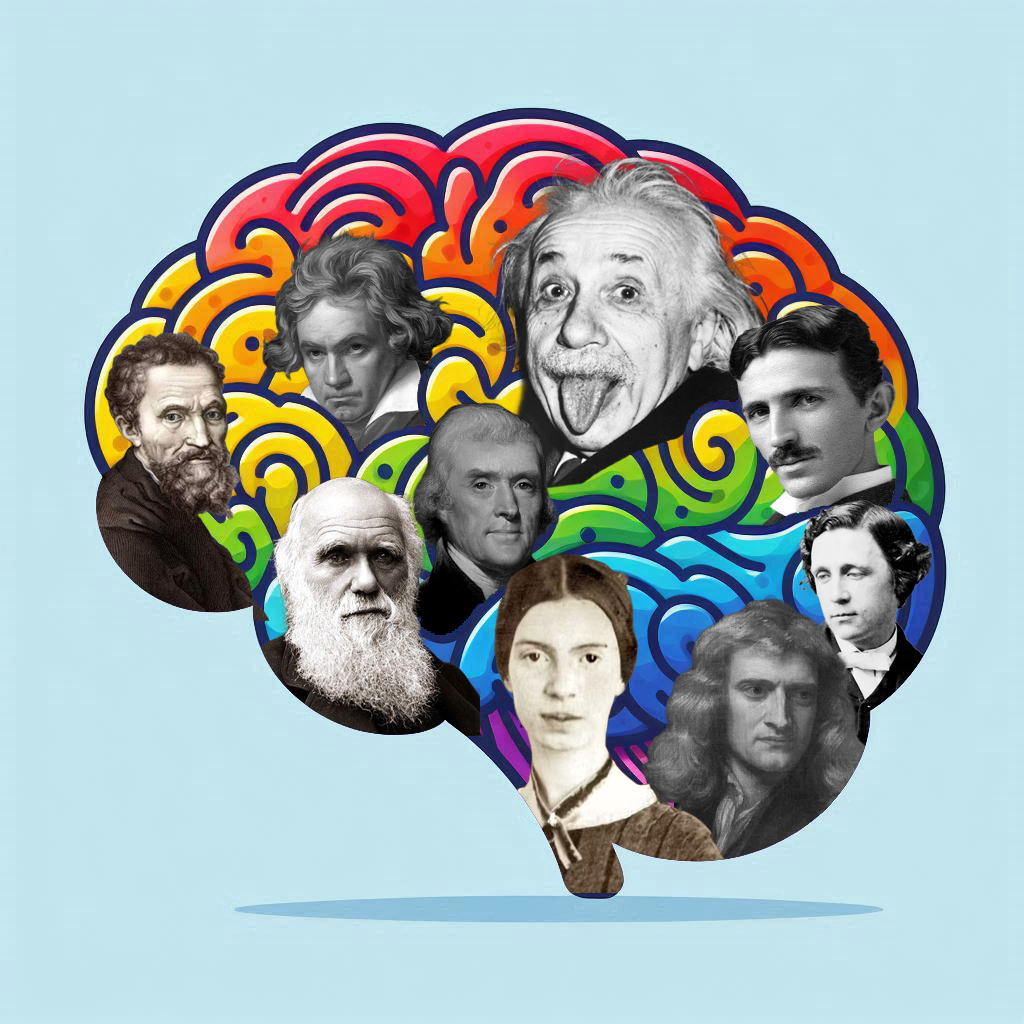While autism as a diagnosis is relatively modern, there is speculation that many historical figures may have been on the autism spectrum based on their behaviors, achievements, and personal histories. These individuals often exhibited characteristics commonly associated with autism, such as intense focus, unique thinking patterns, and social difficulties. Here are some important historical figures who are often speculated to have had autism:
- Albert Einstein
Albert Einstein, the renowned physicist known for his theory of relativity, displayed several traits associated with autism. He had a delayed speech development and was known for his intense focus on scientific problems, often to the exclusion of other activities. His ability to think in abstract and innovative ways has led some to speculate that he may have been on the autism spectrum.
- Isaac Newton
Isaac Newton, one of the most influential scientists of all time, also exhibited traits that suggest he may have had autism. Newton was known for his intense concentration and solitary nature. He was highly focused on his work in mathematics, physics, and astronomy, often becoming deeply absorbed in his studies to the detriment of his social life.
- Nikola Tesla
Nikola Tesla, the inventor and electrical engineer, is another figure often thought to have had autism. Tesla exhibited an extraordinary capacity for visualizing complex systems and had an intense focus on his inventions. His social behavior was often described as eccentric, and he had strict routines and a deep sensitivity to light and sound.
- Michelangelo
The famous Renaissance artist Michelangelo showed behaviors that today might be considered indicative of autism. He was known for his solitary work habits, meticulous attention to detail, and intense focus on his art. Michelangelo’s social interactions were often strained, and he preferred to work alone for long periods.
- Ludwig van Beethoven
The legendary composer Ludwig van Beethoven may also have been on the autism spectrum. Beethoven exhibited strong traits of determination and focus, often isolating himself to compose. He had difficulties with social interactions and communication, and his behaviors sometimes seemed eccentric and obsessive.
- Emily Dickinson
The American poet Emily Dickinson displayed traits that suggest she might have had autism. Dickinson lived much of her life in seclusion, communicating primarily through letters and focusing intensely on her poetry. Her sensitivity to sensory input and preference for solitude are characteristics often associated with autism.
- Thomas Jefferson
Thomas Jefferson, the third President of the United States, is another historical figure speculated to have had autism. Jefferson was known for his deep intellectual pursuits and meticulous record-keeping. His social interactions were often awkward, and he had a tendency to avoid public speaking and large gatherings.
- Lewis Carroll
Lewis Carroll, the author of “Alice’s Adventures in Wonderland,” displayed behaviors that might be associated with autism. Carroll was known for his preference for routines, difficulty with social interactions, and a propensity for mathematical and logical thinking. His imaginative and whimsical writing reflects a unique perspective that could be linked to autistic traits.
- Charles Darwin
Charles Darwin, the naturalist who developed the theory of evolution by natural selection, exhibited traits that suggest he might have been on the autism spectrum. Darwin’s intense focus on his research, meticulous attention to detail, and preference for solitude align with common characteristics of autism.
While it is impossible to diagnose historical figures posthumously with certainty, the traits and behaviors exhibited by these individuals suggest that they may have been on the autism spectrum. Their unique ways of thinking, intense focus, and extraordinary contributions to their fields highlight the potential strengths and abilities associated with autism. Recognizing these historical figures helps to broaden our understanding of autism and celebrate the diverse ways in which people on the spectrum can impact the world.
At Shrub Oak International School, we encourage our students to draw inspiration from historical figures who may have shared their unique experiences. By highlighting the achievements of renowned individuals like Albert Einstein, Isaac Newton, and Emily Dickinson, who exhibited traits associated with autism, we help our students recognize their own potential for greatness. We emphasize that their unique ways of thinking, intense focus, and creative problem-solving skills are strengths that have driven some of history’s most impactful contributions. This approach fosters a sense of pride and empowerment, motivating our students to embrace their abilities and aspire to make their own mark on the world.








